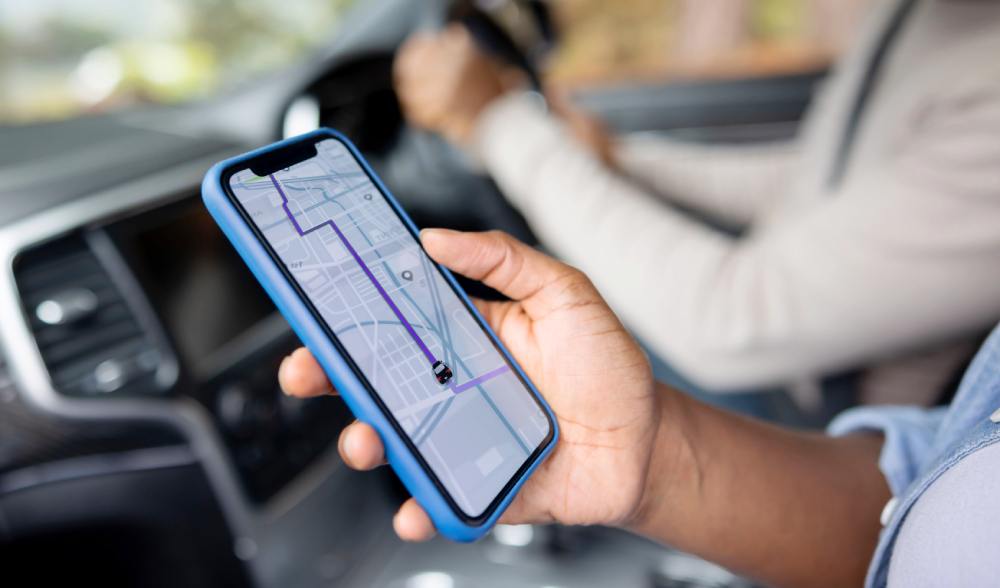In today’s digital age, your smartphone can serve as a powerful navigation system, providing real-time directions, traffic updates, and location services.
With the right apps and proper integration, you can transform your smartphone into a seamless navigation companion for your car.
In this comprehensive guide, we will explore how to use your smartphone as a navigation system, how to connect it to your car, and which vehicles can be easily integrated with this technology.
Choosing the Right Navigation App
Before you start using your smartphone as a navigation system, you’ll need to select the right app. Several popular navigation apps are available, each with its unique features and benefits. Here are a few popular options:
Google Maps:
Google Maps is one of the most widely used navigation apps, offering accurate directions, real-time traffic updates, and a vast database of points of interest.
Waze:
Waze is known for its community-driven approach to navigation. Users can report traffic incidents, accidents, and road closures in real-time, providing up-to-the-minute data for other drivers.
Apple Maps:
Apple Maps is designed for iOS users and offers detailed maps, turn-by-turn directions, and Siri integration for hands-free control.
HERE WeGo:
HERE WeGo provides offline maps and navigation, making it a handy choice for international travel or areas with limited connectivity.
Sygic GPS Navigation & Maps:
Sygic offers offline maps, voice-guided navigation, and advanced features like lane guidance and speed limit warnings.
Connecting Your Smartphone to Your Car
The ability to connect your smartphone to your car’s infotainment system depends on your vehicle’s make and model. Here’s how you can connect your smartphone to your car:
Bluetooth Connection
Most modern vehicles come equipped with Bluetooth connectivity. To connect your smartphone, follow these steps:
- Enable Bluetooth on your smartphone;
- Access your car’s infotainment system or audio settings and select “Bluetooth” or “Phone”;
- Search for available devices on your smartphone and select your car’s name;
- Follow any on-screen prompts to complete the pairing process.
USB Connection
Some cars support smartphone connectivity through a USB cable. To connect your smartphone via USB:
- Use a compatible USB cable to connect your smartphone to your car’s USB port;
- Access your car’s infotainment system and select the appropriate source (e.g., “USB” or “Smartphone”);
- Your smartphone should now be integrated with your car’s system.
Apple CarPlay and Android Auto
Many vehicles offer support for Apple CarPlay (for iOS devices) or Android Auto (for Android devices). These platforms provide seamless integration of your smartphone’s features with your car’s infotainment system.
- Connect your smartphone to the car using a USB cable;
- If your car supports CarPlay or Android Auto, the respective interface should automatically launch on your car’s screen;
- Follow the on-screen instructions to set up and use your smartphone’s navigation apps.
Which Cars Can Be Connected
The availability of smartphone integration varies depending on the car manufacturer and model year. Generally, newer vehicles tend to offer better smartphone connectivity options. Here are some popular car brands known for their good smartphone integration capabilities:
Ford
Many Ford vehicles come equipped with the SYNC infotainment system, which offers compatibility with Apple CarPlay and Android Auto;
Chevrolet
Chevrolet’s MyLink system supports smartphone integration, including Apple CarPlay and Android Auto;
Toyota
Toyota has introduced Apple CarPlay and Android Auto compatibility in many of its recent models;
Honda
Honda’s infotainment system, HondaLink, offers smartphone integration with Apple CarPlay and Android Auto in many models;
Audi, BMW, Mercedes-Benz
Luxury car manufacturers like Audi, BMW, and Mercedes-Benz typically offer advanced infotainment systems with smartphone integration capabilities.
It’s essential to check your car’s documentation or contact the manufacturer to confirm whether your specific model supports smartphone integration and which platforms it is compatible with.
Using Your Smartphone as a Navigation System
Once your smartphone is connected to your car’s infotainment system, using it as a navigation system is straightforward:
Launch the Navigation App
Open your preferred navigation app on your smartphone;
Set Your Destination
Enter your destination address or use voice commands to input your destination;
Follow the Directions
The app will provide turn-by-turn directions, voice guidance, and real-time traffic updates as you drive;
Hands-Free Operation
If your car supports voice commands, you can use voice control to interact with the navigation app safely while driving;
Keep Your Phone Charged
To ensure uninterrupted use of your smartphone as a navigation system, keep your phone charged using a compatible charger or wireless charging if available.
Final Words About Using Your Smartphone as a Navigation System in Your Car
Using your smartphone as a navigation system in your car can enhance your driving experience with real-time directions, traffic updates, and convenience.
Selecting the right navigation app, ensuring compatibility with your vehicle, and following the integration process will allow you to enjoy the benefits of a connected and intelligent navigation system.
Whether you’re navigating through unfamiliar cities or simply looking for the fastest route home, your smartphone can be your trusty guide on the road.

My name is Rebecca McCarthy and I am an American girl with British heritage residing in the beautiful city of Nashville, Tennessee. I have always had a keen interest in cars, particularly brand new ones that showcase the latest technology and design features. I am also passionate about travelling and experiencing new cultures, as well as enjoying hot summer days with friends and family.



